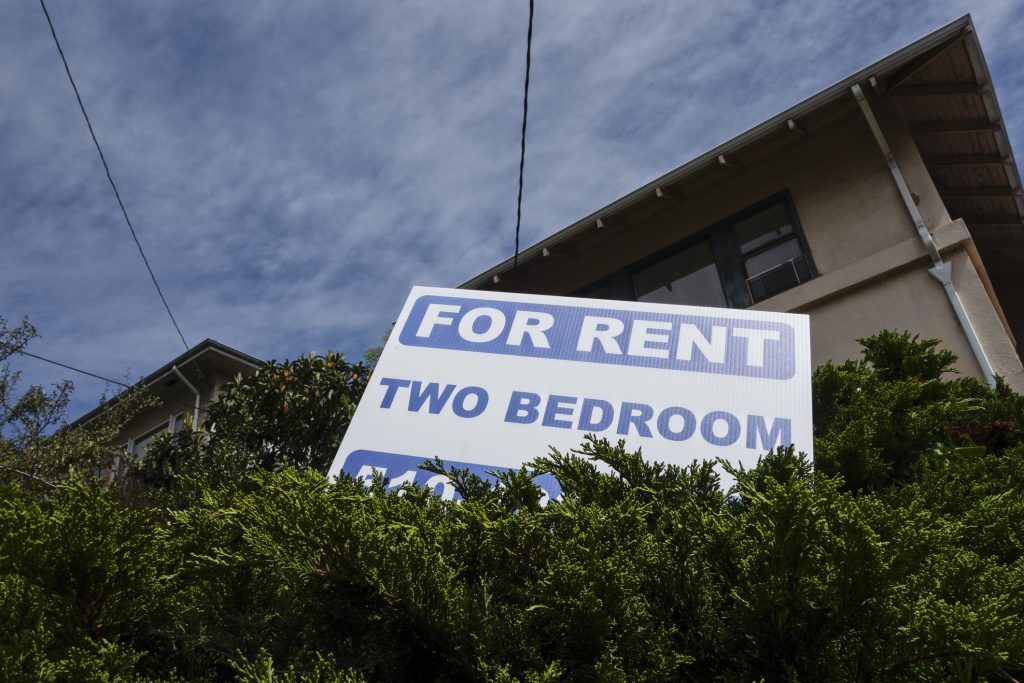Cost of a good life in GTA beyond many – but addressing the gap is possible, say researchers

Posted September 1, 2021 5:49 pm.
The money it takes for a family of four not just to survive, but to thrive, in the GTA is beyond the means of many households, finds a study by the Wellesley Institute. But researchers say the point of their study is to spur action, not hopelessness.
“That is a serious, serious problem that we have to deal with, because that is a problem that will catch up with us,” says Dr. Kwame McKenzie, CEO of the Wellesley Institute, and director of health equity at CAMH. “Thinking about it from a health perspective and breaking down what people need to live a healthy lifestyle, actually gives you a blueprint, the way ahead to focus your policy.”
The Wellesley researchers estimate a budget of $103,032 to $136,428 after tax to obtain that lifestyle. That is as much as $39,000 above the median before-tax income for Toronto households with two earners, according to Statistics Canada.
They reached that range by looking at advice from government researchers and academics about how to live a healthy, well-rounded lifestyle.
Sources included everything from nutrition guides to financial planning. They came up with 10 categories of expenses, and ran them by real-life GTA families.
Two parents working full-time minimum-wage jobs would not come close to earning enough for their family to thrive, the report notes. Before taxes, the family would earn just $55,575 a year. The report notes that even with existing government supports like the Canada Child Benefit, they would still fall short. McKenzie says that while increasing the minimum wage could help, it’s not the only tool the government can use to improve the lives of families.
The researchers add employers, institutions and communities need to pitch in too.
“What people do is they say, oh my god, we can’t do this, we can never get everybody into the situation where they actually have enough money to have a healthy life,” says McKenzie. “Well that’s not true.”
Together, childcare, shelter and savings make up more than half of families’ budgets. He says with measures in those key areas, households would have a greater chance of thriving across the board.
Breaking down the budget
“We have to work on housing, that’s one of the biggest issues,” says McKenzie.
For the family of four, the single-largest immediate expense was shelter. The study looked at three options: owning a three-bedroom semi-detached house in Mississauga, and renting two- or three-bedroom apartments in Toronto. For the Mississauga family, living in their home, located in a moderately walkable community, would cost about $47,020 a year. The researchers note that number assumes the family bought the house in 2016, and that a family buying today would face much higher costs.
The same goes for the families living in the two- or three-bedroom Toronto apartments. The report uses 2020 housing data to estimate rental bills would be between $23,500 and $26,400 a year. Those totals break down to rents of about $1,700 and $1,900 a month. However, these totals reflect a reality that no longer exists in the city. As of this spring, the average rent for a two-bedroom apartment in Toronto was $2,583, while three-bedroom spaces were being rented for $3,355, according to the Toronto Real Estate Board.
“A lot of people said, ‘Well, we know it should be three bedroom, because we’ve got a five year old and we’ve got a child who’s between sort of six and 12, but we can’t afford it,” says McKenzie. He adds households are making difficult decisions in all the categories, and the choices have subtle long-term consequences.
“When people have to make a choice between what they know they should do and what they can afford, that also has a psychological toll that increases anxiety, and that is bad for physical as well as mental health,” he explains.
Behind shelter, childcare was the families’ largest expense. For a preschooler and an elementary-aged kid to attend licensed child care at a YMCA, parents would have to shell out just over $18,200 a year. As a non-profit provider, the YMCA is less expensive than other licensed childcare options, the report notes. The federal government is in the process of striking deals with provinces on a national childcare plan.
“There are loads of different things that government can do to make sure that the average family is actually able to move from surviving into actually being healthy,” he says. “I can’t think of anything better to spend our money than making sure that families, putting up kids or bringing them up in a healthy environment.”
Saving for the future also took a significant chunk of families’ present-day budgets. The Financial Consumer Agency of Canada advises people put away 10 per cent of take home pay, and have cash to cover three to six months of expenses, in case of emergency. Based on those guidelines, the Mississauga family would have to put away more than $22,000 a year for a rainy day. The Toronto family would have to tuck about $17,000 away.
For instance, if the government raised Canada Pension Plan payments, deferred student debt payments until they were making livable salaries, or implemented national pharmacare and dental care, families wouldn’t be pressured to save quite as much, notes McKenzie. Here, employers could help too by offering comprehensive retirement and healthcare plans.
One of the largest remaining costs is getting around. For the family in Mississauga, the study gives them two used 2015 Honda Civic LXs – one of the most popular cars in Canada. The Toronto families get one Civic, an adult transit pass, and an allowance for the family to take transit often. The cost for the Mississauga family is $16,000 a year, while the price tag for the Toronto family is about $11,000.
“We have to think about what we actually want for families,” says McKenzie. “For the next generation, what’s the environment in which they’re going to be brought up in? How we can make that a healthy environment?
The pandemic has made some of these choices more stark, on both a personal and a societal level, he adds. A family that lives in a cramped apartment, can’t quarantine effectively if one of them gets sick. Or a parent who can’t afford to drive to work risks getting infected on public transit.
“We have by necessity spent a huge amount of money during this pandemic,” he adds. “If we actually spent the same sorts of money, thinking about how we can build a resilient healthy community, the next time around […we] will be in a better position to keep our economy and keep our society going in difficult times.”
The costs of living and thriving in the GTA
| Category | Examples | Cost |
| Food and nutrition | Groceries, vitamins, food wrap | $9,509/year; $176/week |
| Shelter | Mortgage on a three bedroom house in Mississauga; rent on a three-bedroom apartment in Toronto; rent on a two-bedroom apartment. Insurance. | $23,583 to $47,020/year |
| Transportation | Mississauga: two used 2015 Honda Civic LXs, plus occasional public transit use. Toronto: one Honda Civic LX, an adult transit pass, and frequent family public transit use. Parking, insurance and maintenance. | Mississauga: $16,099/year
Toronto: $11,706/year |
| Physical activity | Two City of Toronto adult recreation centre passes; organized activities for kids. | $1,483/year |
| Health care | Family extended health insurance and drug coverage. | $5,353/year |
| Personal care | Clothes, haircuts, toiletries, laundry, household cleaning supplies | $3,961/year |
| Social participation | Books, newspapers, cell phones, computer and internet, local vacations, gifts, hosting parties, charitable donations. Saving for an international trip every three years. | $10,035/year |
| Education and professional development | School supplies, field trips, continuing education, professional dues | $1,963/year |
| Child care | YMCA licensed care for pre-schooler and elementary-aged child | $18,.267/year |
| Savings and debt | General savings and retirement | $17,172/year to $22,738/year |
Source: Thriving in the city for families, Wellesley Institute








